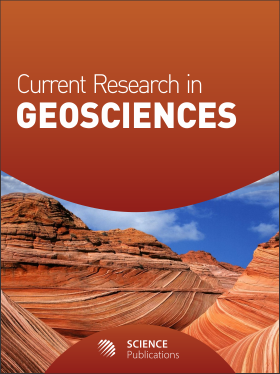Petrophysical Characterization and Flow Models for Agbada Reservoirs, Onshore Niger Delta, Nigeria
- 1 University of Port Harcourt, Nigeria
Abstract
Three selected reservoirs (XB, XC and XE) from three wells (A, B and C) occurring within the Agbada producing sands in part of the Greater Ughelli Depobelt of the onshore Niger Delta have been studied. The study aims at evaluating the petrophysical characteristics of the sand-bodies and also identifies the various flow units present within each reservoir. Petrophysical parameters were used as input data to generate the Stratigraphic Modified Lorenzo Plots (SMLP). This model uses a graphical method to quantitatively determine flow units and to understand the flow and storage capacities of sedimentary rocks. Results of the analysis shows that average porosity and permeability range is between 7-28.8% and 1.20-529 mD, indicating poor to very good reservoir quality in different parts of the field. Generally, porosity and permeability decrease with increasing depth in the field reflecting burial diagenetic porosity loss in response to increasing thermal exposure with depth. Porosity and permeability change laterally across the field from west to east. Increase in porosity and permeability towards the eastern part of the field reflects lateral change in facies. Well C has the best porosity (28%) and permeability (529 mD), lowest water saturation (0.01), hence, highest hydrocarbon prospect. The stratigraphic Modified Lorenzo Plots (SMLP) revealed a total of seventy five (75) Flow Units (FU) in the three studied reservoirs. Each reservoir displays similar flow pattern relative to others suggesting that facies (rock properties) have a strong control on flow in each reservoir. Generally, poor quality units occur towards the bottom of each reservoir in a well and good quality units towards the top. The dominant flow units in the three reservoirs fall within the high storage and flow (normal flow unit) unit category, suggesting that the dominant depositional setting (shallow marine shoreface/beach/barrier) and facies type beside diagenetic effects play significant role in fluid dynamic behaviour of any rock body. Depositional environments and subsequent diagenesis are the primary factors controlling porosity distribution, pore connectivity and fluid flow in the three studied reservoirs.
DOI: https://doi.org/10.3844/ajgsp.2015.40.52

- 6,560 Views
- 4,038 Downloads
- 0 Citations
Download
Keywords
- Shoreface Sand
- Shallow Marine
- Porosity
- Permeability
- Lorenzo Plot
